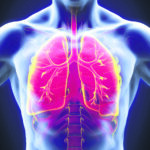
Pneumonia is a common and potentially life-threatening respiratory infection that affects millions of people worldwide. It can be caused by various pathogens and manifests in several types, each with its unique characteristics. This article delves into the world of pneumonia, exploring its various types and shedding light on this silent threat.
Understanding Pneumonia
Pneumonia is an inflammatory condition of the lungs characterized by the accumulation of pus, mucus, and other fluids in the air sacs. These accumulations hinder the normal exchange of oxygen and carbon dioxide, leading to severe respiratory distress. Pneumonia can affect people of all ages, but it is particularly dangerous for young children, the elderly, and individuals with compromised immune systems.
Types of Pneumonia
Community-Acquired Pneumonia (CAP):
Community-acquired pneumonia is one of the most common types and typically originates outside healthcare facilities. It can be caused by various pathogens, including bacteria, viruses, and fungi. The symptoms include high fever, cough, chest pain, and difficulty breathing. Streptococcus pneumoniae is a common bacterial culprit in CAP.
Hospital-Acquired Pneumonia (HAP):
Hospital-acquired pneumonia, also known as nosocomial pneumonia, is contracted during a hospital stay. Patients with weakened immune systems are particularly vulnerable. HAP is often caused by antibiotic-resistant bacteria like Methicillin-resistant Staphylococcus aureus (MRSA). Preventative measures, such as strict hygiene protocols, are essential to reduce the risk.
Ventilator-Associated Pneumonia (VAP):
VAP is a subset of HAP that occurs in individuals on mechanical ventilation. The breathing tube can introduce pathogens into the lungs. It is crucial to maintain rigorous sterile techniques to prevent VAP in critical care settings.
Aspiration Pneumonia:
Aspiration pneumonia results from inhaling foreign substances, such as food, liquids, or vomit, into the lungs. This can occur when the gag reflex is impaired or due to excessive alcohol or drug consumption. People with neurological conditions, like stroke victims, are at higher risk.
Atypical Pneumonia:
Atypical pneumonia is typically caused by pathogens other than typical bacteria. Mycoplasma pneumoniae, Chlamydophilapneumoniae, and Legionella pneumophila are common culprits. Symptoms are often milder than those of typical pneumonia, and it is sometimes referred to as “walking pneumonia.”
Fungal Pneumonia:
Fungal pneumonia is less common and often affects individuals with compromised immune systems, such as those with HIV/AIDS. Fungi like Candida and Aspergillus can invade the lungs and cause serious infections.
Viral Pneumonia:
Viral pneumonia is caused by various viruses, including the influenza virus, respiratory syncytial virus (RSV), and the COVID-19 virus. Symptoms can range from mild to severe, and complications can be life-threatening.
Conclusion
Pneumonia is a serious respiratory infection that comes in various forms, each with its unique characteristics and causes. Early diagnosis and prompt treatment are critical for a successful recovery. Vaccinations, good hygiene practices, and a healthy lifestyle can help reduce the risk of contracting pneumonia. Understanding the different types of pneumonia can empower individuals to take the necessary precautions to protect themselves and their loved ones from this silent threat to respiratory health. It is essential to stay informed and seek medical attention if pneumonia symptoms are suspected, as early intervention can greatly improve the chances of a full recovery.
The author is a Head of Department & Senior Consultant of Pulmonology at Sanar international hospital.




